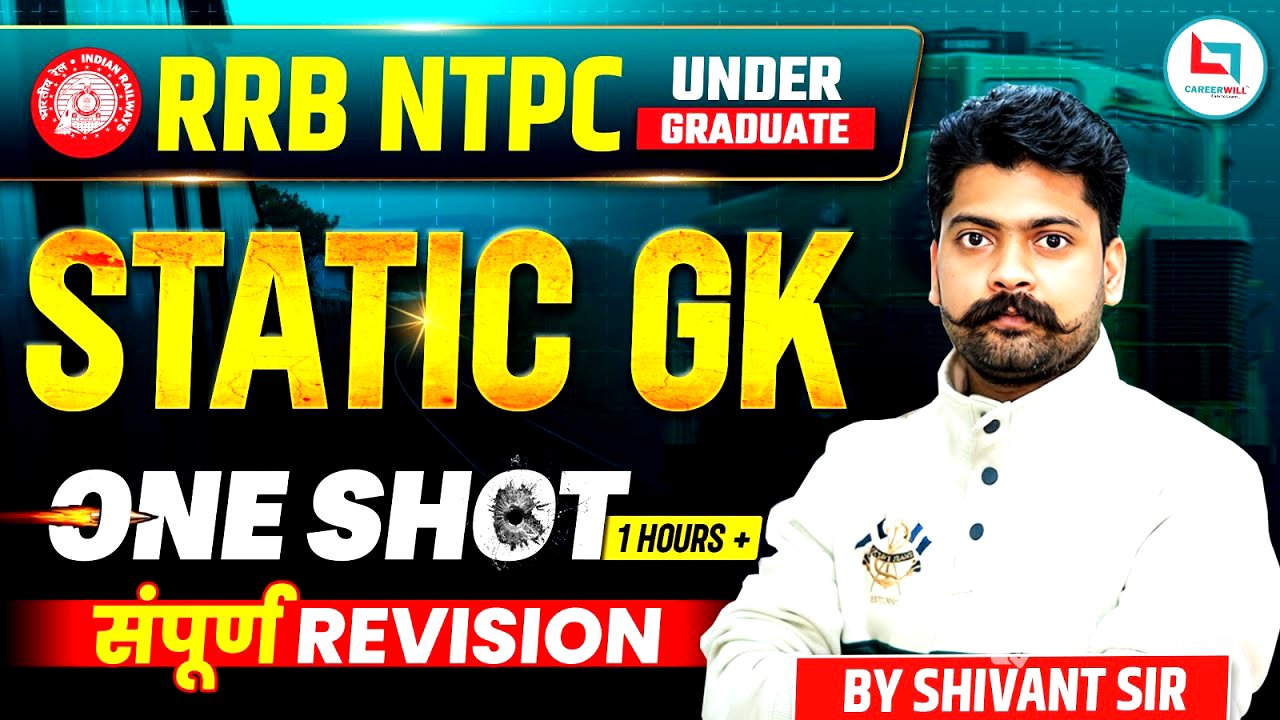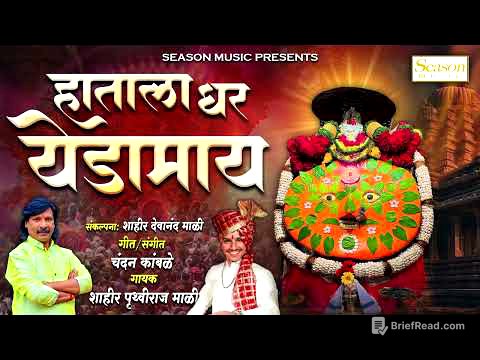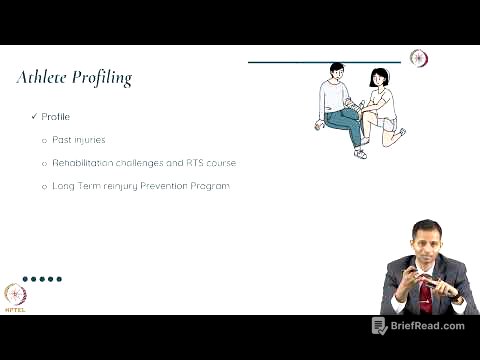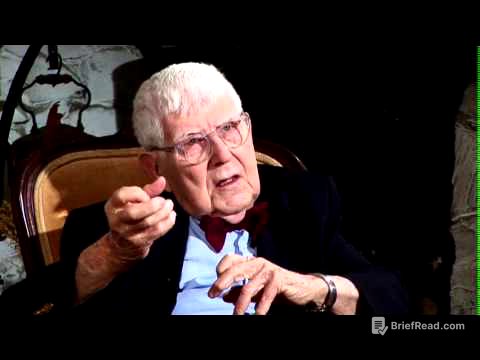TLDR;
This video provides a comprehensive and quick revision of Static GK, covering various topics such as classical dances, musical instruments, national parks, UNESCO World Heritage Sites, temples, awards, research institutes, sports trophies, and five-year plans. The presenter aims to help viewers quickly revise important topics for exams.
- Classical dances and related personalities
- Musical instruments and artists
- National Parks and UNESCO World Heritage Sites
- Awards and their significance
- Research Institutes in India
- Sports Trophies and number of players in different games
- Important Days
- Organizations and their headquarters
- Indian music Gharanas
- Important books and authors
- Five-Year Plans of India
Classical Dances [0:31]
There are eight classical dances in India. Bharatanatyam is from Tamil Nadu, Kathak is from Uttar Pradesh, Kathakali and Mohiniyattam are from Kerala, Manipuri is from Manipur, Kuchipudi is from Andhra Pradesh, Odissi is from Orissa, and Satriya is from Assam, added in 2000.
Personalities of Classical Dance [1:48]
Yamini Krishnamurthy, related to Bharatanatyam and Kuchipuri from Tamil Nadu, received Padma Shree in 1968, Padma Bhushan, and Padma Vibhushan in 2016. Her autobiography is "A Passion for Dance." Sonal Mansingh is related to Bharatanatyam and Orissa dance from Maharashtra, received Padma Bhushan in 1992 and Padma Vibhushan in 2003, and was nominated to the Rajya Sabha. Rukmani Devi Arundale from Tamil Nadu, related to Bharatanatyam, died in 1986, and was the first artist to be a member of the Rajya Sabha. Leela Samson, related to Bharatanatyam from Tamil Nadu, received Padmashree in 1990 and the Sangeet Natak Academy Award. Marnani Sarabhai from Gujarat, wife of Vikram Sarabhai, is related to Bharatanatyam and received Padma Shri in 1965 and Padma Bhushan in 1992. Padma Subramaniam from Tamil Nadu, related to Bharatanatyam, received Padma Shri in 1981 and Bhushan in 2003.
More Personalities of Classical Dance [5:11]
Basano Ram Gopal from Karnataka, related to Bharatanatyam, wrote "Indian Dancing" in 1951 and "Rhythms in Heavens," and was awarded the Order of the British Empire. Padmini Priyadarshini from Kerala, died in 2016, received the Santla Natya Shri award, and was famous for Bharatanatyam dance and film. Vaijayanti Mala from Tamil Nadu, the first South Indian actress in Hindi movies, received the Best Actress award for Sangam, Ganga Jamuna, and Sadhumati, and is related to Bharatnatyam. T. Bala Saraswati from Tamil Nadu, related to Bharatnatyam, received Padma Bhushan in 1957 and Padma Vibhushan in 1997, and the Sangeet Natak Akademi Award in 1955. Malvika Sarukkai from Tamil Nadu, related to Bharatanatyam and Odyssey, received Padma Shri in 2003 and the Sangeet Natak Academy Award in 2002. M. K. Saroja from Tamil Nadu, related to Bharatnatyam, died in June 2022, received Padma Shri in 2011 and the Sangeet Natak Academy Award in 1995. C. V. Chandrasekhar, active since 1947, received the Padma Bhushan and Kalidas Samman of Madhya Pradesh, and is related to Bharatanatyam.
Kuchipudi Personalities [8:07]
Arpana Satheesan from Kerala, a famous Kuchipudi dancer, received the Distinguished National Dance Award in January 2022. Radha Reddy from Andhra Pradesh has received both Padma Bhushan and Padma Shri. Dream Girl from Tamil Nadu has received Padma Bhushan and is famous for Kuchipudi. Shobha Naidu from Tamil Nadu has received the Kalidas Award from Madhya Pradesh and the Hamsa Award from Andhra Pradesh. Padmaja Reddy from Andhra Pradesh received the Sangeet Natak Akademi Award in 2015 and Padmashree in 2022.
Odissi and Kathakali Personalities [9:43]
Kelu Charan Mohapatra from Orissa is known for reviving Odissi classical dance and opened the Shrijan school. His students include joint Pranagriha, Sonal Mansingh, Priyavanda Modi, and Yamini Krishnamurthy. He has received Padmshree, Padma Bhushan, and Padma Vibhushan. Madhavi Mudgal is also associated with Oshi State and received the Sangeet Natak Academy Award. Anand Sivaraman, Krishnak, Maranalini Sarabhai, Baltol, Narayana Menon, Uday Shankar, Krishna Nair, and Shanta Rao are related to Kathakali from Kerala.
Kathak, Manipuri and Mohini Attam Personalities [11:18]
Birju Maharaj, Dakshu Maharaj, Sitara Devi, Surdev Maharaj, Gopi Krishnan, and Shobha Narayan are related to Kathak from Uttar Pradesh. Shobhanarayan is the youngest recipient of Padma Shri in Kathak. Malavika Government, Chandralekha Bindadin Maharaj Akshan Maharaj Narayan Chatterjee Manju Sri Kumudni Vidya Bori Adkar are also related to Kathak. Naina Jhaveri, Swarana Jhaveri, Ranjana Jhaveri, Darshana Jhaveri (Jhaberi Sisters), Guru Amli Singh, Nal Kumar Singh, Albino Devi, Charu Mathur, Savita Mehta, Kalawati Devi, Bimbavati, Nirmala Mehta, Rajkumar Singh, and Jeet Singh are related to Manipuri dance from Manipur. Bharti Shivaji, Ragini Devi, Hema Malini, Sridevi Kala Mandalam Kalyani Amma, Shanta Rao Kala Mandalam Chemati Dr Sunanda Nayak are related to Mohini Attam from Kerala.
Satriya Personalities and Musical Instruments [12:40]
Shrimad Shankardev Shardeep Sophia Guru Jatan Singh Goswami and Prabhat Sharma are related to Satriya from Assam. The next topic is musical instruments and artists. There are three types of musical instruments: wind instruments, rhythm instruments, and string instruments. Examples include flute, shehnai, tabla, sarangi, sitar, and veena.
Sarod and Tabla Personalities [14:15]
Amjad Ali Khan, Alauddin Khan, Ali Akbar Khan, Buddin Das Gupta, Bahadur Khan, Sardani Zarine Sharma are Sarod instrumentalists. Alarkha, Ustad Zakir Hussain, Sameer Khan, Pandit Kishan Maharaj, Pandit Gyan Prasad Bose, Sandeep Das are associated with Tabla.
Sarangi, Violin and Sitar Personalities [15:21]
Shakur Khan, Pandit Ramnarayan, Ramesh Mishra, Sultan Khan, Ustad Bindad Khan are related to Sarangi. Gopalakrishnan M Rajam M Chandrasekharam Lalgudi Jai Raman are famous for Violin. Ravi Shankar, Uday Shankar, Shaheed Parvez Khan, Budhaditya Mukherjee Anushka Shankar Green Shankar Bhattacharya Nikhal Banerjee Mustaq Ali Khan and Vilayat Khan are related to Sitar.
Flute, Clarinet and Santoor Personalities [17:38]
Har Prasad Chaurasia, awarded the Padma Vibhushan and Sangeet Natak Academy Award, and Pandit Pannalal Ghosh are flute players. Ustad Bismillah Khan, Krishnam Chowdhary, and Ali Ahmed Hussain are related to the Clarinet. Pandit Shivkumar Sharma Bhajan Sopari is associated with Santoor.
Veena, Rudra Veena, Mohan Veena and Mridgam Personalities [18:31]
Lived Mohuddin Dagar Ayagar Shyam Sundaram Dorai Swami Iyengar are related to the Veena. Asad Ali Khan is connected with Rudra Veena. Pandit Vishwa Mohan Bhatt is the inventor of Mohan Veena. KV Prasad S V Raja Rao Umal Yapuram Sivaraman Inka are related to Mridgam.
Pakhavaj, Surbahar, Guitar and Traditional Instruments [19:33]
Tota Ram Sharma is famous for Pakhawaj. G Annapurna God is related to Surbahar. Brij Bhushan Kabra is related to Guitar. Kwang, Gogona, Singha, and Dotra are traditional instruments from Assam, Jharkhand, and West Bengal.
National Parks [20:51]
National parks are created for species conservation. There are 106 national parks in India. The largest national park is Hemis in Ladakh, and the smallest is South Button in Andaman Nicobar. Asiatic Lions are found in Gir National Park in Gujarat, and the natural habitat of the Bengal tiger is Sunderban National Park. India's first national park is Corbett National Park, established in 1936. Madhya Pradesh has the highest number of tigers and national parks (11).
National Parks of Rajasthan and Madhya Pradesh [22:12]
Keoladeo, Ranthambore, Sariska, Desert Pass, and Mount Abu Wildlife Century are in Rajasthan. Kanha, Madhav, Bandhav, Satpura, Sanjay, Pench, and Panna are national parks in Madhya Pradesh.
National Parks of Arunachal Pradesh, Haryana and Uttar Pradesh [23:27]
Namdapha and Mouling are in Arunachal Pradesh. Kalesar and Sultanpur are in Haryana. Dudhwa and Chandraprabha are in Uttar Pradesh.
National Parks of Jharkhand, Manipur, Sikkim and Tripura [24:11]
Betla, Hazaribagh, and Bhima are in Jharkhand. Keibul Lamjao and Sirohi are in Manipur. Kanchenjunga is in Sikkim. Clouded is in Tripura.
National Parks of Tamil Nadu and Orissa [24:43]
Gulf of Mannar, Annamalai, Mukurthi, and Guindy are in Tamil Nadu. Bhitarkanika, Nandankanan, and Simlipal are in Orissa.
National Parks of Mizoram and Jammu & Kashmir [26:06]
Murlen and Phawngpui Blue Mountain are in Mizoram. Kachigram National Park, Salim Ali National Park, Kistwada National Park, Jayamandal Reserve are in Jammu and Kashmir.
National Parks of Ladakh, West Bengal and Assam [26:51]
Hemis is in Ladakh. Sundarbans National Park, Buxa Tiger Reserve, Gorumara National Park, Neora Valley National Park, Singalila National Park, Jaldapara National Park are in West Bengal. Manas National Park, Kaziranga National Park, Nameri National Park, Dibru-Saikhowa National Park, and Dihing Patkai National Park are in Assam.
National Parks of Andhra Pradesh and Maharashtra [27:19]
Kasur Brahmananda Reddy National Park, Indira Gandhi Zoology Park, Margavami National Park, Sri Venkateswara National Park, Kavala National Park, and Nagarjuna Sagar-Srisailam are in Andhra Pradesh. Borivali, Chandoli, Tadoba, Gugamal, and Navegaon are in Maharashtra.
National Parks of Andaman & Nicobar and Himachal Pradesh [28:24]
Saddle Peak, Mahatma Gandhi Marine National Park, Mount Harriet National Park, Rani Jhansi Marine National Park, and South Button are in Andaman and Nicobar. Pin Valley National Park, Great Himalayan National Park, Rohila National Park, Khirganga National Park, and Simbalbara National Park are in Himachal Pradesh.
National Parks of Gujarat and Uttarakhand [28:52]
Gir National Park, Marine National Park, Blackbuck National Park are in Gujarat. Jim Corbett National Park, Valley of Flowers National Park, Nanda Devi National Park, Rajaji National Park, and Gangotri National Park are in Uttarakhand.
National Parks of Chhattisgarh, Kerala and Karnataka [29:27]
Kanger Valley National Park, Indravati National Park, and Guru Ghasidas National Park are in Chhattisgarh. Silent Valley National Park, Periyar National Park, Mathikettan National Park, Anamudai National Park, and Eravikulam National Park are in Kerala. Bandipur National Park, Nagarhole National Park, Anshi National Park, Bannerghatta National Park, Kudremukh National Park, and Tungabhadra National Park are in Karnataka.
National Parks of Punjab, Telangana, Goa and Bihar [30:20]
Harike Wetland National Park is in Punjab. Kasu Brahmananda Reddy National Park, Mahavir Harina Vanasthali National Park, and Mrugavani National Park are in Telangana. Salim Ali Bird Sanctuary, Netravali Wildlife Sanctuary, Cotigao Wildlife Sanctuary, Mollem National Park are in Goa. Valmiki National Park, Vikramshila Gangetic Dolphin Sanctuary, Kanwar Lake Bird Sanctuary are in Bihar.
UNESCO World Heritage Sites [30:52]
UNESCO World Heritage Sites are declared by the United Nations Educational, Scientific and Cultural Organization (UNESCO). There are currently 43 World Heritage Sites in India.
UNESCO World Heritage Sites: Taj Mahal, Ellora Caves and Ajanta Caves [31:58]
The Taj Mahal in Uttar Pradesh, built by Mughal emperor Shah Jahan, was added in 1983. The Ellora Caves in Maharashtra, built by the Rashtrakuta dynasty, with 34 monasteries and temples, were added in 1983. The Ajanta Caves in Maharashtra, also built by the Rashtrakuta dynasty, with 29 caves made by cutting rocks, were added in 1983.
UNESCO World Heritage Sites: Agra Fort, Sun Temple and Mahabalipuram [33:40]
Agra Fort in Uttar Pradesh, a 16th-century Mughal monument, was added in 1983. The Sun Temple in Konark, Orissa, built by Raja Narsingh Dev I in the 13th century, representing Kalinga architecture, was added in 1984. The Group of Monuments at Mahabalipuram in Tamil Nadu, known for chariot pavilions and open-air reliefs, was added in 1984.
UNESCO World Heritage Sites: Kaziranga, Keoladeo and Manas National Parks [35:00]
Kaziranga National Park in Assam, home to the Unicorn Rhino, was added in 1985. Keoladeo National Park in Rajasthan was added in 1985. Manas Wildlife Sanctuary in Assam was added in 1985.
UNESCO World Heritage Sites: Khajuraho, Hampi and Fatehpur Sikri [36:08]
The Khajuraho Group of Monuments in Madhya Pradesh was added in 1986. The Group of Monuments at Hampi in Karnataka, the last capital of the Vijayanagara Empire, was added in 1986. Fatehpur Sikri in Uttar Pradesh, built by Mughal emperor Akbar, was added in 1986.
UNESCO World Heritage Sites: Churches of Goa and Pattadakal [36:51]
The Churches and Convents of Goa were added in 1986. The Group of Monuments at Pattadakal in Karnataka, representing Chalukya art, with Hindu temples and Jain sanctuaries, was added in 1987.
UNESCO World Heritage Sites: Chola Temples and Elephanta Caves [37:40]
The Great Living Chola Temples in Tamil Nadu, including the Brihadeeswarar Temple in Thanjavur, Gangaikonda Cholapuram Temple, and Airavatesvara Temple in Darasuram, were added in 1987. The Elephanta Caves in Maharashtra, also known as Dharapuri Caves, with seven caves dedicated to Lord Shiva, were added in 1987.
UNESCO World Heritage Sites: Sundarbans, Nanda Devi and Sanchi [38:30]
The Sundarbans National Park in West Bengal was added in 1987. The Nanda Devi and Valley of Flowers National Park in Uttarakhand was added in 1988. The Buddhist Monuments at Sanchi in Madhya Pradesh, including the stupa built by Emperor Ashoka, were added in 1989.
UNESCO World Heritage Sites: Qutub Minar and Humayun's Tomb [39:10]
The Qutub Minar in Delhi, with its foundation laid by Qutubuddin Aibak and completed by Iltutmish, was added in 1993. Humayun's Tomb in Delhi, built in 1570, was added in 1993.
UNESCO World Heritage Sites: Mountain Railways, Bodh Gaya and Bhimbetka [39:56]
The Mountain Railways of India in Tamil Nadu, West Bengal, and Himachal Pradesh were added in 1999. The Mahabodhi Temple Complex at Bodh Gaya in Bihar, where Gautam Buddha attained enlightenment, was added in 2002. The Rock Shelters of Bhimbetka in Madhya Pradesh, discovered in 1958 by Dr. V.S. Wakankar, were added in 2003.
UNESCO World Heritage Sites: Shivaji Terminal, Champaner-Pavagadh and Red Fort [41:06]
The Chhatrapati Shivaji Terminal in Maharashtra was added in 2004. The Champaner-Pavagadh Archaeological Park in Gujarat was added in 2004. The Red Fort Complex in Delhi, built by Shah Jahan, was added in 2007.
UNESCO World Heritage Sites: Jantar Mantar and Western Ghats [41:38]
The Jantar Mantar in Rajasthan, built by Rajput King Sawai Jai Singh II, was added in 2010. The Western Ghats, spanning Gujarat, Maharashtra, Goa, Karnataka, Kerala, and Tamil Nadu, were added in 2012.
UNESCO World Heritage Sites: Hill Forts of Rajasthan and Rani ki Vav [42:17]
The Hill Forts of Rajasthan, including Chittorgarh Fort, Kumbhalgarh Fort, Ranthambore Fort, Gagron Fort, Amber Fort, and Jaisalmer Fort, were added in 2013. Rani ki Vav in Gujarat, situated on the banks of the Saraswati River, built in the Maru-Gurjara architectural style, was added in 2014.
UNESCO World Heritage Sites: Great Himalayan National Park and Nalanda [43:01]
The Great Himalayan National Park in Himachal Pradesh was added in 2014. The Archaeological Site of Nalanda Mahavihara in Bihar, constructed by Kumar Gupta, was added in 2016.
UNESCO World Heritage Sites: Kanchenjunga, Chandigarh and Ahmedabad [43:42]
The Kanchenjunga National Park in Sikkim was added in 2016. The Architectural Work of Le Corbusier in Chandigarh was added in 2016. The Historic City of Ahmedabad in Gujarat was added in 2017.
UNESCO World Heritage Sites: Victorian and Art Deco Ensembles of Mumbai, Jaipur City and Kakatiya Rudreshwara Temple [44:10]
The Victorian and Art Deco Ensembles of Mumbai was added in 2018. The Jaipur City was added in 2020. The Kakatiya Rudreshwara (Ramappa) Temple in Telangana was added in 2021.
UNESCO World Heritage Sites: Dholavira, Shantiniketan and Hoysala Temples [44:25]
Dholavira in Gujarat, an Indus Valley Civilization site, was added in 2021. Shantiniketan in West Bengal was added in September 2023. The Hoysala Temples of Karnataka were added in September 2023.
UNESCO World Heritage Sites: Moidam of Assam [44:59]
The Moidam of Assam, related to the Ahom dynasty, was added in July 2024.
Temple Architecture Styles [45:20]
There are three patterns of temples: Nagar style from the North, Dravid of South, and Vaisara, a mixer of both.
Temples in Chhattisgarh, Kerala and Karnataka [46:10]
Mama Bhanja Temple is in Chhattisgarh. Padmanabhaswamy Temple and Sabarimala Temple are in Kerala. Virupaksha Temple and Gomateshwara Temple are in Karnataka.
Golden Temple, Kamakhya Temple and Konark Temple [47:35]
The Golden Temple in Amritsar, Punjab, was founded by Guru Arjun Dev, with its foundation laid by Mian Mir, a Muslim Sufi saint. The Kamakhya Temple in Assam, a temple of Goddess Sati, was constructed by the Rajas of the Malle dynasty. The Konark Temple in Orissa, also known as the Black Pagoda, was built by Narasimha Deva I in the 13th century.
Lingaraj Temple, Char Dhams of Uttarakhand and Temples in Tamil Nadu [49:32]
The Lingaraj Temple in Orissa, dedicated to Lord Shiva, was built by the Somvanshi dynasty. The four Dhams of Uttarakhand are Kedarnath, Gangotri, Yamunotri, and Badrinath. Ramanathaswamy Temple, Meenakshi Amman Temple, Kapaleeshwarar Temple, Brihadeeswarar Temple, Mahabalipuram Shore Temple, Airavatesvara Temple, and Annamalaiyar Temple are in Tamil Nadu.
Temples in Madhya Pradesh and Rajasthan [50:26]
Khajuraho temples and Kandariya Mahadev Temple are in Madhya Pradesh. Dilwara Jain Temple is in Rajasthan.
Adhai Din Ka Jhonpra, Mahabodhi Temple and Tirupati Temple [51:26]
Adhai Din Ka Jhonpra is in Rajasthan. The Mahabodhi Temple in Bihar is where Gautam Buddha attained enlightenment. The Tirupati Venkateswara Temple is in Andhra Pradesh.
Temples in Gujarat and Karnataka [52:33]
Somnath Temple and Dwarkadhish Temple are in Gujarat. Hazara Rama Temple is in Karnataka.
Monasteries Founded by Shankaracharya [53:19]
Jyotirmath in Uttarakhand, Sringeri Matha in Karnataka, Sharda Math in Gujarat, and Govardhan Math in Orissa were founded by Shankaracharya.
Nobel Prize [53:45]
The Nobel Prize is awarded annually to individuals who have made pioneering achievements in Physics, Chemistry, Medicine, Peace, Literature, and Economics. The Nobel Prize was established in 1901, except for economics, which was established in 1967 and first awarded in 1969. The Nobel Prize is given on December 10th.
Indian Nobel Laureates [55:37]
Rabindranath Tagore (Literature, 1913), C.V. Raman (Physics, 1930), Mother Teresa (Peace, 1979), Amartya Sen (Economics, 1998), and Kailash Satyarthi (Peace, 2014) are Indian Nobel laureates.
Ramon Magsaysay Award and Oscar Award [56:00]
The Ramon Magsaysay Award, established in 1957, is given annually on August 31st for public service, community leadership, journalism, literature, and international contributions. It is known as Asia's Nobel Prize. The Oscar Award is given annually by the Academy of Motion Picture Arts and Sciences in the United States. Bhanu Athaiya was the first Indian to receive an Oscar for the film Gandhi. Satyajit Ray was honored with an Oscar for lifetime achievement in cinema in 1992.
Pulitzer Prize, Booker Prize and Bharat Ratna [57:29]
The Pulitzer Prize, established in 1917, is awarded annually in the United States for journalism, literature, and music. The Booker Prize, established in 1969, is the highest award in literature for British, Irish, and Commonwealth countries. The Bharat Ratna, established in 1954, is India's highest civilian award, presented by the Government of India for Arts, Literature, Science, and Social Sector.
Padma Vibhushan, Padma Bhushan and Bharatiya Jnanpith Award [58:39]
The Padma Vibhushan, established in 1954, is awarded for distinguished services of the highest order. The Padma Bhushan, established in 1954, is awarded for distinguished services of a high order. The Bharatiya Jnanpith Award, established in 1965, is given for works in a recognized language.
Shanti Swarup Bhatnagar Award, RD Birla Award and Dhanwantri Award [59:46]
The Shanti Swarup Bhatnagar Award is given to Indian scientists for exceptional performance. The R.D. Birla Award is given in the field of medical science. The Dhanwantri Award is given for exceptional performance in medical science.
Dhyan Chand Award, Arjuna Award and Dronacharya Award [1:00:16]
The Dhyan Chand Award, started in 2002, is given for lifetime achievement in sports. The Arjuna Award, established in 1961, is given for outstanding achievements in sports. The Dronacharya Award, established in 1985, is given to outstanding coaches in sports.
Dada Saheb Phalke Award and Gallantry Awards [1:01:33]
The Dada Saheb Phalke Award, started in 1969, is given for outstanding contributions to Indian cinema. Devika Rani was the first recipient. Gallantry awards are of two types: war time and peace time. War time awards are Paramveer Chakra, Mahavir Chakra, and Veer Chakra. Peace time awards are Ashok Chakra, Kirti Chakra, and Shaurya Chakra.
Grammy Award and Research Institutes of India [1:02:21]
The Grammy Award, started in 1959, is related to music. The next topic is Research Institutes of India.
Research Institutes in Delhi, Dehradun and Mumbai [1:02:47]
Indian Agricultural Research Institute is in New Delhi. Petroleum Institute is in Dehradun. Indian Cancer Research Institute is in Mumbai.
Research Institutes in Izzatnagar, Kolkata and Ranchi [1:03:06]
Indian Veterinary Research Institute is in Izzatnagar, Uttar Pradesh. Institute Of Chemical Biology is in Kolkata. Indian Institute of Natural Resins & Gums is in Ranchi, Jharkhand.
Research Institutes in Lucknow, Chengalpattu and Hyderabad [1:03:57]
Industrial World Poison Research Institute is in Lucknow. Central Leprosy Training Institute is in Chengalpattu, Tamil Nadu. Centre for Molecular and Cellular Biology is in Hyderabad, Telangana.
Research Institutes in Kudlu, Shimla and New Delhi [1:04:16]
Central Plantation Crop Research Institute is in Kudlu, Kerala. Central Potato Research Institute is in Shimla, Himachal Pradesh. Central Road Research Institute is in New Delhi.
Research Institutes in Dhanbad, Durgapur and Chennai [1:04:32]
Fuel Research Institute is in Dhanbad, Jharkhand. Central Mechanical Engineering Research Institute is in Durgapur, West Bengal. Central Leather Research Institute is in Chennai.
Research Institutes in Coimbatore and Mysore [1:05:04]
Sugarcane Breeding Institute is in Coimbatore, Tamil Nadu. Central Food Technological Research Institute is in Mysore, Karnataka.
Research Institutes in Pune, Barrackpore and Kolkata [1:05:12]
National Institute of Virology is in Pune, Maharashtra. Central Jute Technological Research Institute is in Barrackpore, West Bengal. Central Glass and Ceramic Research Institute is in Kolkata, West Bengal.
Research Institutes in Karaikudi, Cuttack and Bhavnagar [1:05:34]
Central Electrochemical Research Institute is in Karaikudi, Tamil Nadu. Central Rice Research Institute is in Cuttack, Orissa. Central Salt Sea Chemical Research Institute is in Bhavnagar, Gujarat.
Research Institutes in Chandigarh, Roorkee and Dhanbad [1:05:59]
Central Scientific Instrument Organization is in Chandigarh. Central Building Research Institute is in Roorkee, Uttarakhand. Indian School of Mines is in Dhanbad, Jharkhand.
Research Institutes in Goa, Kanpur and Hyderabad [1:06:17]
National Institute of Oceanography is in Goa. National Sugar Research Institute is in Kanpur, Uttar Pradesh. National Geophysical Research Institute is in Hyderabad, Telangana.
Research Institutes in Hyderabad, Ahmedabad and Lucknow [1:07:05]
National Institute of Nutrition is in Hyderabad, Telangana. National Institute of Health is in Ahmedabad. National Botanical Research Institute is in Lucknow.









